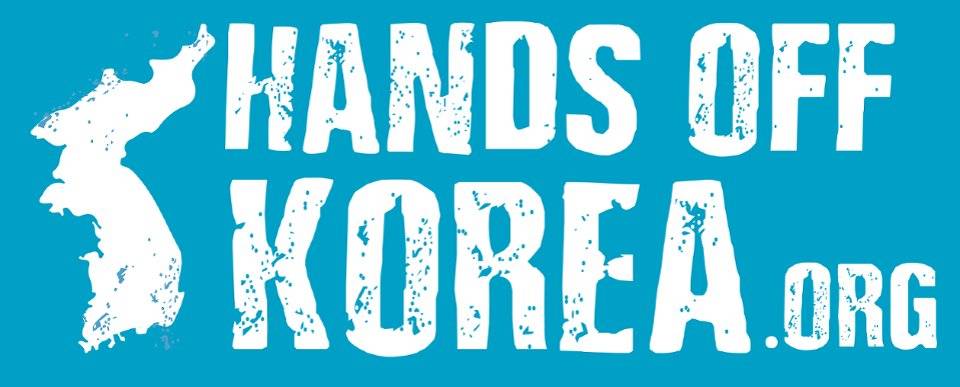

People in the United States need to understand why the Korean people feel so strongly about defending their sovereignty and independence.
The Koreans are a distinct people who were united for thousands of years by language, culture and geography, but have been divided since 1945.
Living on a peninsula with a mountainous border had protected them from land invasions and contributed to their unique development. Their civilization progressed so rapidly that “between 1011 and 1087 A.D. — approximately 375 years before German printer Johannes Gutenberg used movable metal type to print his famous 42-line Bible — the Koreans had printed the complete set of a Buddhist canon known as Tripitaka Koreana.” (International Journal of Humanities and Social Science, July 2014)
This year marks the 152nd anniversary of the first attempt by the U.S. government to “open up” Korea. Yes, this struggle goes back all the way to 1866, when the heavily armed U.S. gunboat, the General Sherman, steamed up the Daedong River. It was stopped along the way by Korean people, who told the ship to leave but also offered the sailors food and water.
Instead of waiting for permission to enter another people’s country, the warship continued on its way to the city of Pyongyang, where it fired its cannons. For four days, there was fighting between the U.S. crew and the Korean defenders. Finally, the Koreans surrounded the warship with fire boats — small vessels stuffed with flaming straw and wood — and destroyed the invading Sherman, killing the whole crew.
When news of their defeat reached Washington, it was a shock to the U.S. ruling class. The industrialists and traders saw themselves as a budding world power at the time, vying with the European colonialists for control of the Pacific. “Opening up” Korea would also give them a stepping stone to China, with its vast population and resources.
By 1871 — five years after the General Sherman disaster — the U.S. launched another expedition to Korea, this time with five warships and 650 men. “They let the Koreans know that their fleet would be exploring the area, and that they meant no harm,” says the U.S. Naval Dictionary. But that’s not what happened. This time they sailed up the Han River to the area that is Seoul today, ignoring Korean warnings to turn back. With superior firepower, cannons and howitzers, they attacked the Korean garrisons along the river and killed some 300 people.
But the Koreans refused to give in to the aggressors from across the ocean.
By 1898, after a war with Spain, a declining colonial ruler, the U.S. had grabbed the Philippines (as well as Cuba and Puerto Rico) to become a Pacific power. That same year it also formally annexed Hawai’i, five years after U.S. planters had overthrown Indigenous Queen Lili’uokalani there.
Struggles among the imperialist powers intensified. Who would be the first to grab up more territory and resources?
Japan beat the U.S. to the punch in Korea. In 1910 Japanese troops invaded, killed the Korean queen and began 35 years of harsh colonial repression and exploitation.
Were the U.S. imperialists unhappy about that? Of course. But not because they sympathized with the Korean people. No, they wanted Korea to be their colony. But they had other rivals to deal with.
When the first huge inter-imperialist war broke out in 1914, Japan was on the side of the British and French against Germany. So when the U.S. entered the war in 1917, it became an ally of Japan. While President Woodrow Wilson organized a Peace Conference after the war in the name of self-determination for all people, he wasn’t going to bring up the issue of Japan’s oppression of the Korean people.
World War II, like the first world war, was basically over which of the imperialist powers would dominate the oppressed, colonized nations of the world. But this time, Japan was allied with Germany. Japan’s defeat gave the U.S. the opportunity to enter Korea, supposedly as liberators. For the first time, U.S. troops got into the southern half of the country.
Camp Humphreys
They have stayed there ever since, dividing the Korean people. Right now, the Pentagon is finalizing the building in south Korea of its largest overseas base in the entire world: Camp Humphreys. Located in Pyeongtaek, 40 miles south of Seoul, it will house 45,000 people — U.S. troops and their families — when completed in 2020.
This expanded base will occupy nearly 3,500 acres, about 5.5 square miles. That is land forcibly taken from south Korean farmers and villagers, who protested for many years.
“The installation has a battle simulation center, small arms range, communications center, and motor pools for servicing Bradley Fighting Vehicles and battle tanks, all poised and constantly ready to ‘Fight Tonight’. … In all, more than 650 new buildings have been built on what was once rice fields and farming villages.” (The Diplomat, Nov. 6)
Tellingly, it is located on what was once a Japanese military base.
The Trump administration is doing everything it can — including threatening a nuclear war with north Korea — to keep the peninsula from reuniting. After 152 years of U.S. aggression against Korea, it’s time for people in the U.S. to say “Hands off Korea!”
Boston, April 20, 2025 The leadership of the Democratic Party nationally and especially in Massachusetts…
Hamas – Islamic Resistance Movement made the following call, “Gaza cries out to you —…
The centennial of the birth of Malcolm X, also known as El-Hajj Malik El-Shabazz, is…
In a courageous act of solidarity with the Palestinian people, a Moroccan port workers’ union…
Buffalo, New York A large group of demonstrators marched on the Buffalo ICE (U.S. Immigration…
In the 1950s, when Japan and much of Europe was in ruins, the U.S. accounted…